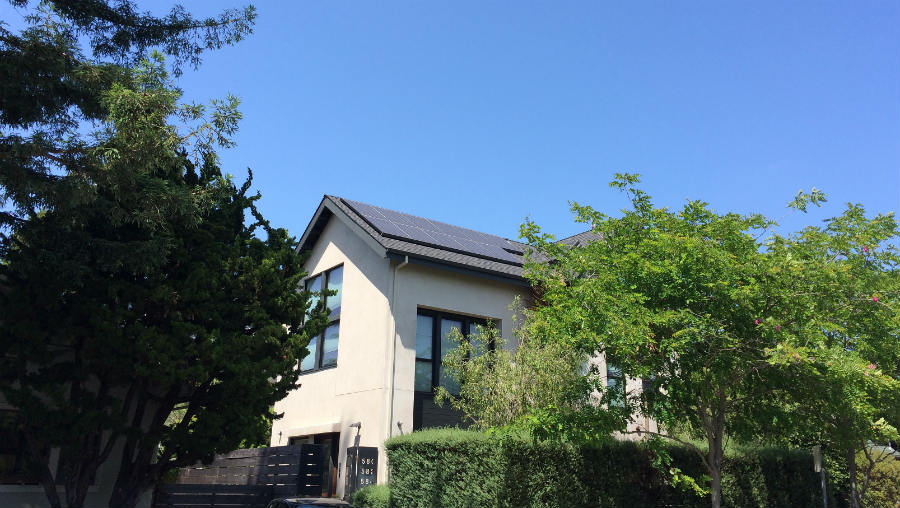Do Solar Panels Cause Roof Leaks?

You’re looking to install rooftop solar panels, you’ve chosen a solar installation company to do the job, and the equipment is going to be installed securely. It’s normal to wonder about problems with solar panel installation.
So, what happens when it rains? Will the roof leak because you put panels on it?
In short, no. Here’s why.
Why Won’t My Roof Leak?
Installing solar panels on the roof is the most cost-effective way to deliver solar energy to your home. Given that the materials and panels themselves are often under warranty for 25 years or more, those panels should provide decades of money saving clean energy to your home.
But will they cause leaks in the roof? No. Modern solar technology is installed using time and lab tested equipment that is designed to protect the roof. Yes, installers will need to make holes in your roof to attach the solar panels securely, but they will be using special attachments that cause the water to run around and away from the penetrations. This is made possible by the fact that water very predictably runs down your roof. The attachments either have a raised barrier, that diverts the water around the attachment point, or create a ‘dimple’ that helps create a reliable seal between the roof material and the attachment point.
In fact, solar panels actually help protect the roof they cover from the harsh and degrading UV rays of the run. By preserving that part of the roof, it keeps pounding rain off (though rain is what ends up cleaning your panels by washing debris off. The same goes for snowy climates. More: Solar Panel Cleaning). Side note – you might think the solar panels wouldn’t work in the winter due to snowfall. But solar panels (dark in color) heat up and melt the snow, and the strong composite materials that make up those panels means they’re not going to collapse under the snow’s weight.
Related: Solar Panel Snow Removal
What Else Should I Know?
The pitch of your roof and the direction it faces both play into how solar panels are mounted. Usually, they should rest at a 20 to 30 degree angle. Most solar panels aren’t attached onto the roof itself, but on mounted rails. Panels don’t move — they don’t have moving parts, and don’t need regular maintenance. Solar installers add sealants to fill in the gaps, and the mounts are surrounded by flashing, or coverings, that add an extra barrier between the mounts and the weather.
In case there is a problem with the roof, you can remove the panels easily. It would take hurricane level winds to pull up solar panels and have them take roof shingles with them! So as long as solar panels are securely attached to rafters below your roof shingles, they’ll stay put. If you’re still concerned, there are plenty of ways to maximize a roof’s durability, like extra flashings and fasteners that help prevent any leaks or hazards.
Is My Roof Ready for Solar?
Before installing anything, it’s a good idea to call a roofer anyway to inspect it and see if there is any preexisting damage. Go through your documents about your house and find out how many years you’ve got left on your roof’s warranty. You want a roof in good condition before installing panels, so if you notice any kind of mold, rot, or leak beforehand, you need to get it fixed. If you need to replace the roof within the next five years, put in the new roof and solar panel system at the same time.
Remember, solar is an ROI positive investment – not a burdensome cost. The Lawrence National Laboratory and the Department of Energy have shown that homes with solar sell faster and for significantly more money!
Do you have solar panels on your roof? Have you ever run into an issue with roof leaks due to your panels? Sound off in the comments!
